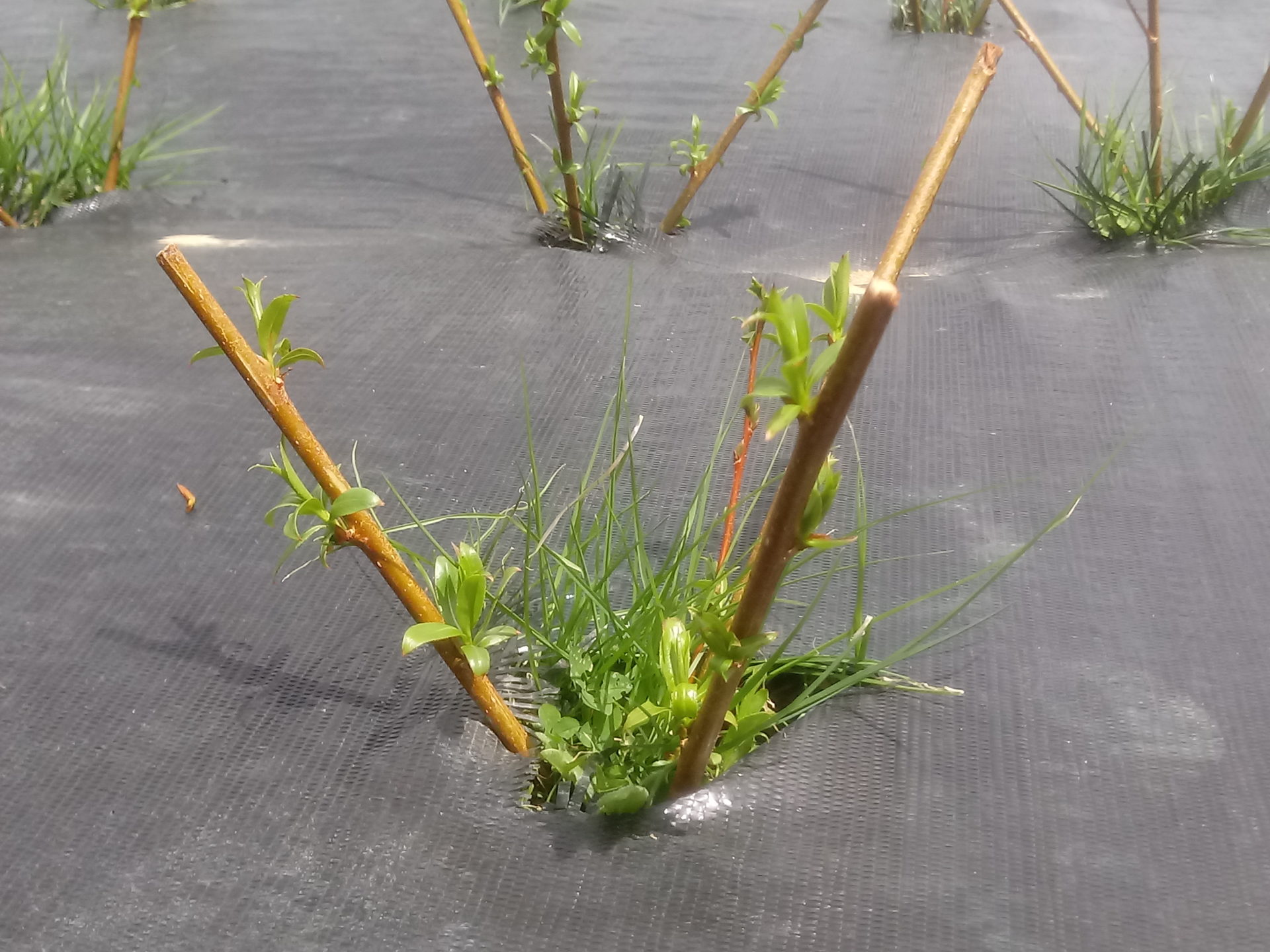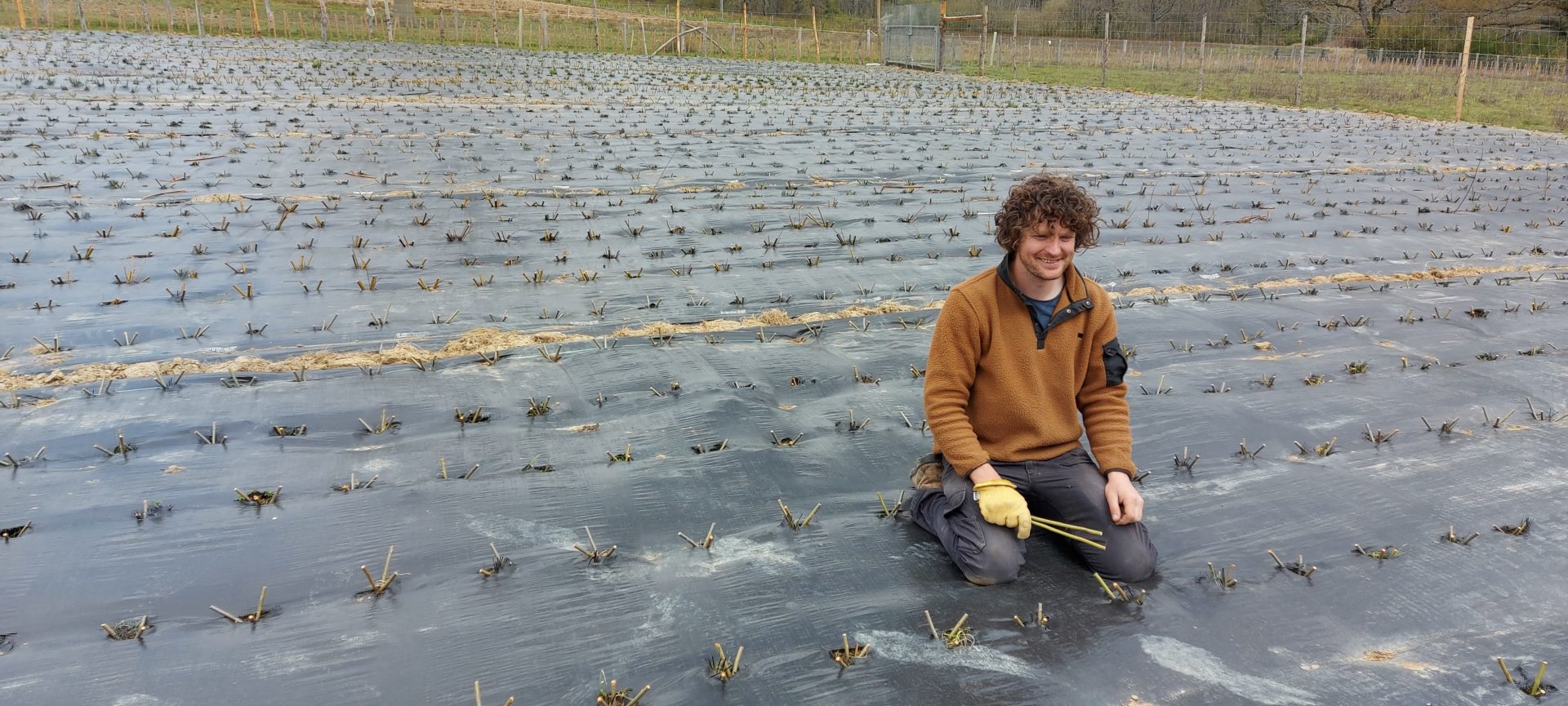Organic Willow Cultivation in West Sussex – After many years in the making, Sussex Willow Coffins now has a large scale Withy Bed for growing Willow to weave coffins and urns. The new withy bed near Ardingly in Sussex has been fully planted with 50,000 cuttings of several Willow varieties.
Eco-Friendly & Organic Willow Cultivation in Sussex
Our new Withy Bed is located in an idyllic location on Pickeridge Farm (West Sussex). Working closely with Rachel and William the farm owners; we have been adding another level of biodiversity to the already naturally supportive farmland.
Read on to find out more about how SWC is growing our own Willow for weaving; and developing the natural landscape in Sussex…
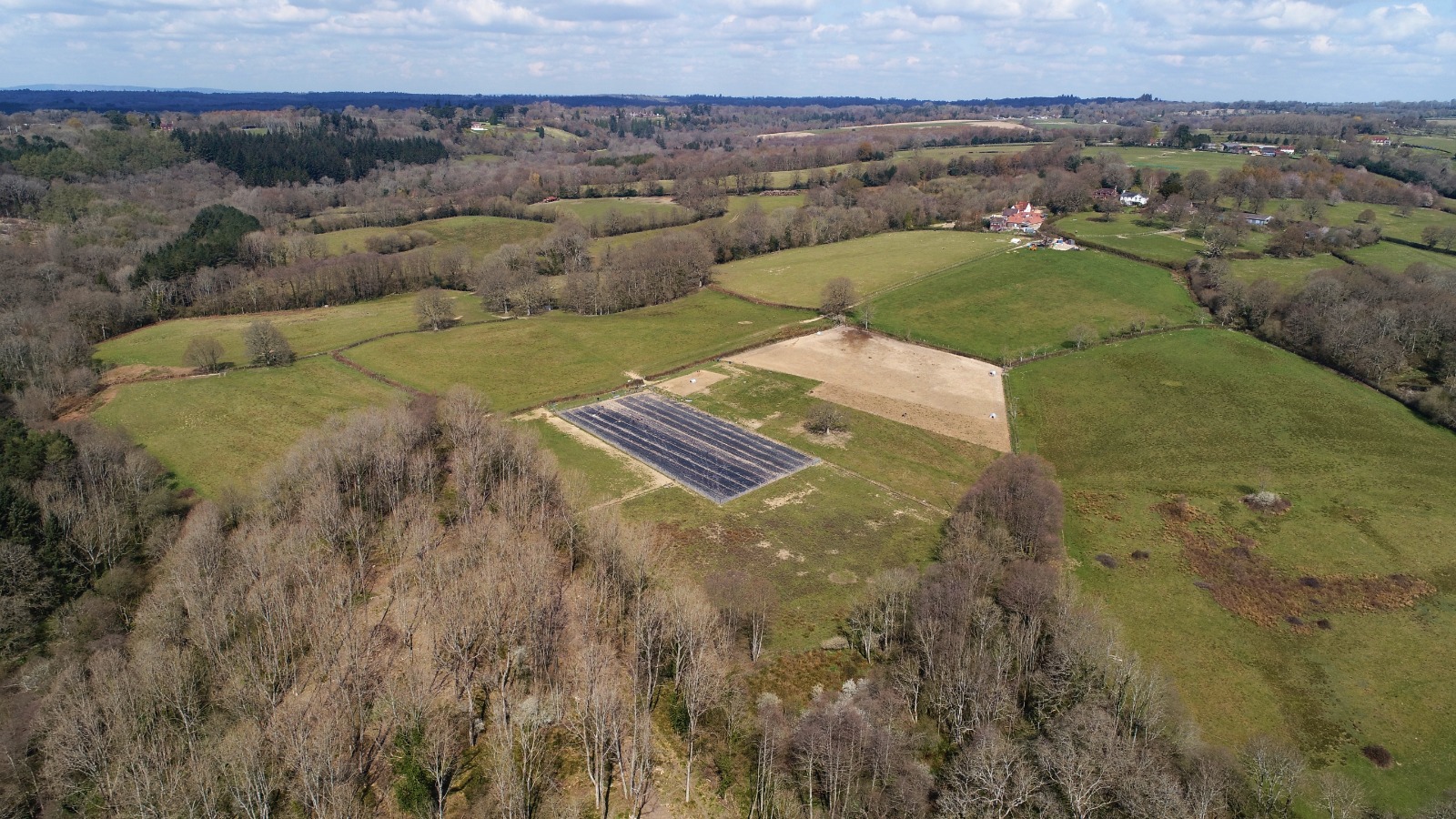
Growing Wicker Willow in Sussex
Thanks to a connection from Sussex Wildlife Trust, the support of Pickeridge Farm and a team of hard-working helpers and volunteers including some young Duke of Edinburgh members. SWC now has a fully planted, one acre Withy Bed to grow our own Willow for weaving; this being the most ambitious planting undertaken by us to date. We foresee the plot meeting the entirety of our willow needs within the next five years.
Preparing the Withy Bed to Plant Willow
Over a period of several month, on a plot that measures 100m x 44m (previously used to raise Saddleback Pigs). Much time and effort has gone into erecting a deer/rabbit proof fence around the perimeter. We have been cultivating the land in preparation for planting the Willow. The ground was first flail mowed to reduce vegetation then weed suppressing membrane was laid; this will be removed and replaced by a deep layer of woodchip mulch over the next two years.
We will also be experimenting with planting leguminous cover crops between the rows of willow; to keep grass and invasive weeds out, whilst enhancing the biodiversity of the plot.
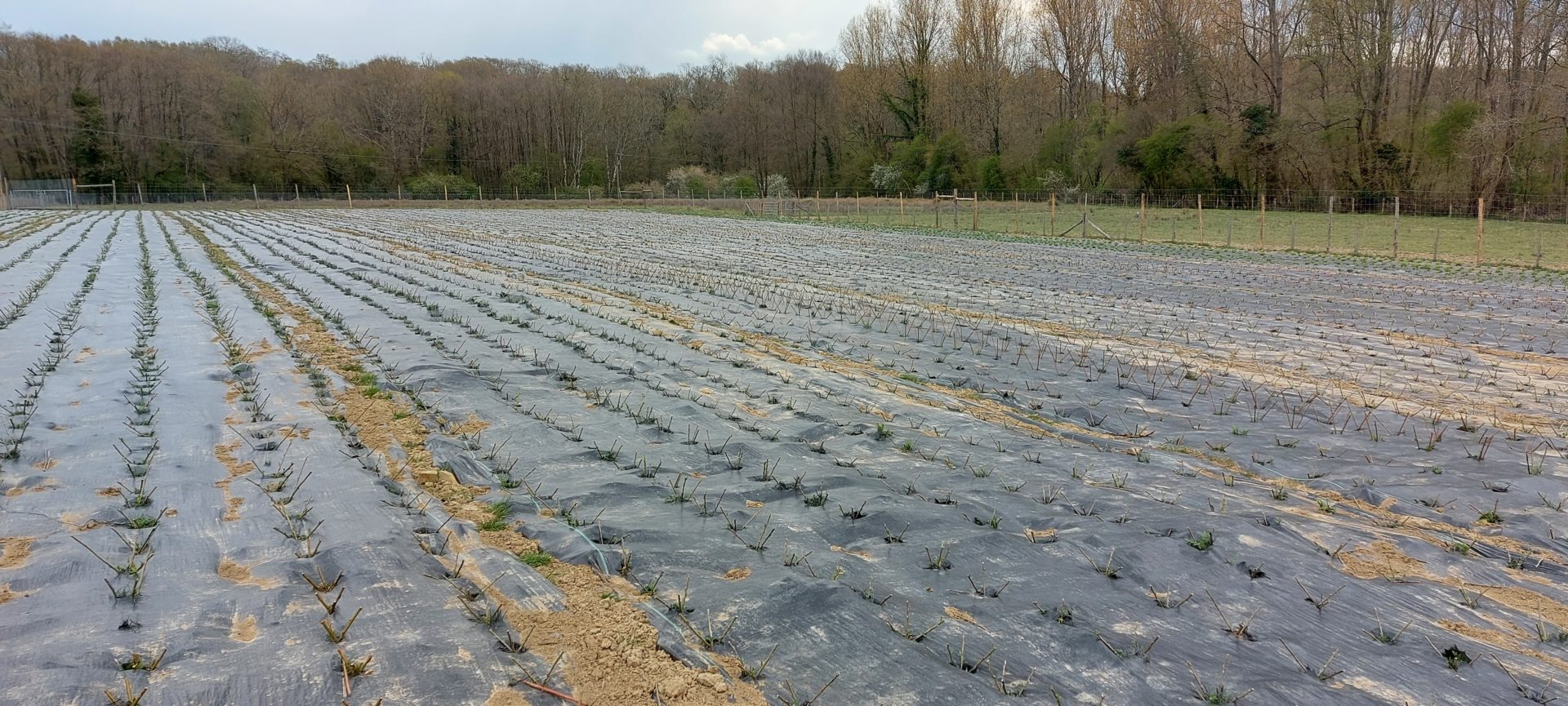
Planting Willow Cuttings By Hand
All of the Willow cuttings have now been planted through the membrane. Row upon row, in small clusters to maximise the crop yielded from the limited yet ample space. The theory of planting three willow cuttings together, is that the individual trees will graft together as they grow; form a stronger, resilient rootstock.
With the addition of a hand-built deer and rabbit proof fence around the plot; the Withy Bed is set to grow Willow used for weaving wicker coffins for many years to come. Willow plots of this nature if well cared for can remain productive for 30 years plus.
Jake planting the final Willow Cutting
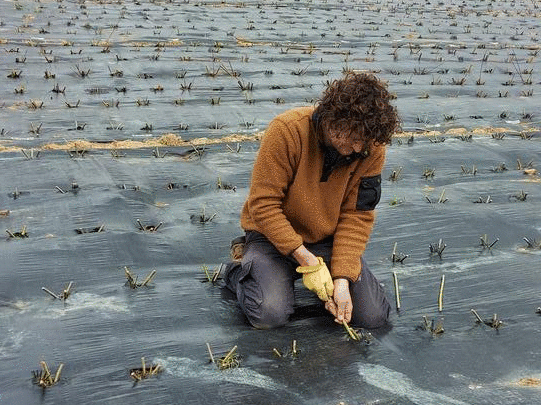
Minimum Impact Organic Willow Cultivation
To reduce the impact on the eco system, all construction and planting in the Withy Bed has been done by hand. With the only machine used being a quad bike to help transport tools and materials to the site.
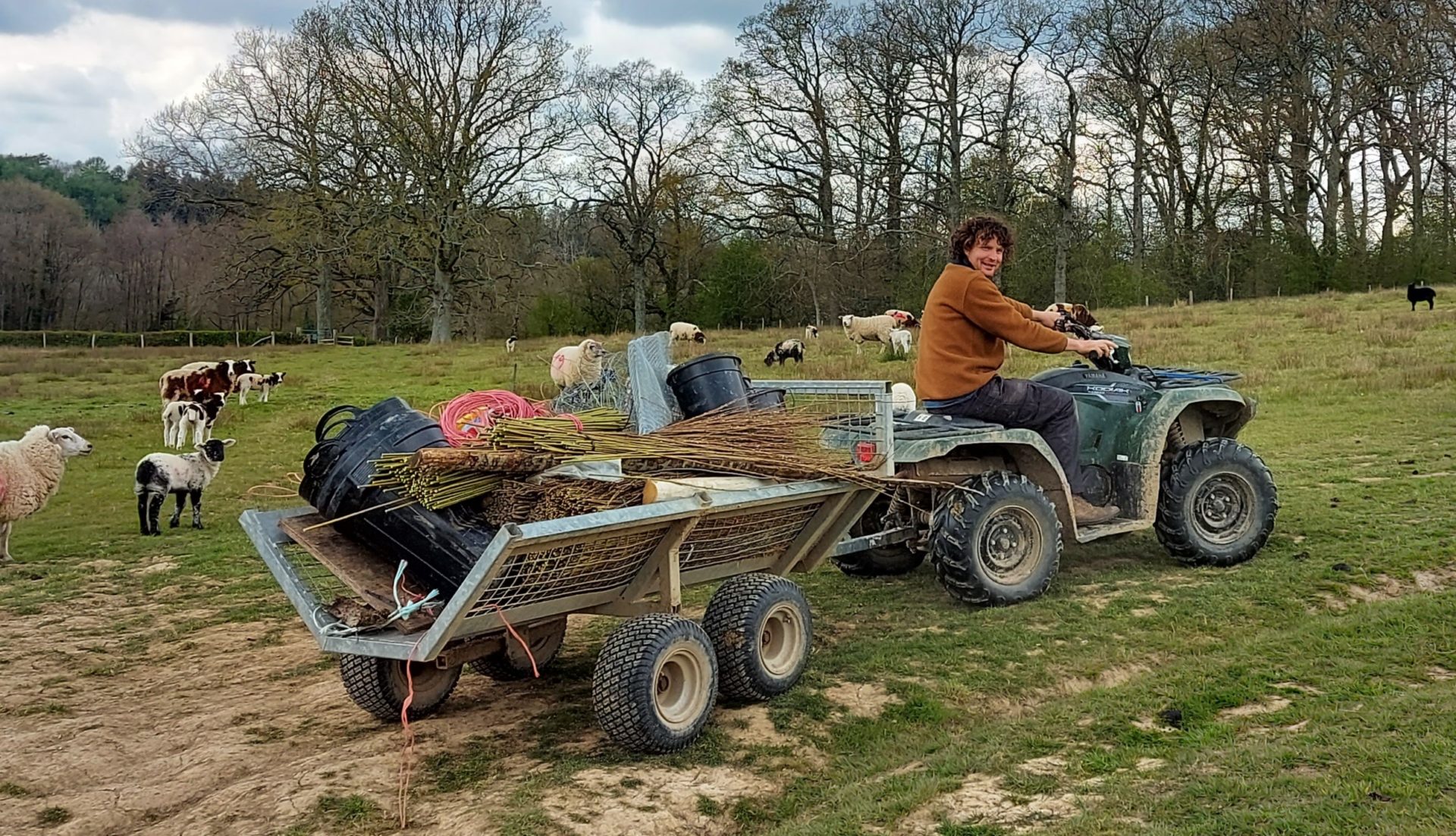
Willow Varieties Planted
Carefully selected heritage varieties of Willow have been planted, to ensure a high yield of usable material for weaving. The mix of varieties will also aid in the diversification of the coppice crop making it more naturally resistant to pests and disease.
Specific Varieties of Willow Grown by SWC
- Black Maul (Salix triandra)
- Leentjes (Salix purpurea)
- Flanders Red (Salix alba vitellina x fragillis)
- Belgian Red (Salix fragillis sanguinea)
- Carl Jenson (Salix purpurea)
Willow Cultivation Creating Wildlife Habitats
Planting and growing Willow in the area will naturally attract and support new species of wildlife to this location. After cropping each year, the sunlight from the coppicing will help other plants to germinate and flower at the ground-level; this will attract further insect life. As the Willow trees grow birds will also use the taller, dense growth for shelter and nesting.
Creating different levels of shade and vegetation density, giving a wide variety of habitat niches (previously unseen on the farm); which will soon be filled by a diversity of plants and other creatures.
Water Conservation – Ecological Benefits of Growing Willow
The new Willow plants will also aid in water retention for the farm; reducing run-off from the land and helping to stabilise the ground. Eliminating the need for added water management and major landscaping on the field.
